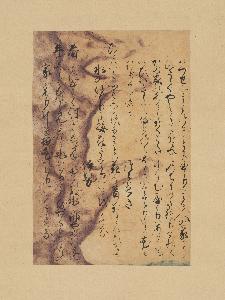Fujiwara No Tameyo
Fujiwara No Tameyo;Nijō Tameyo
Place: Kyoto
Born: 1250
Death: 1338
Biography:
Nijō Tameyo (二条為世, 1250–1338), also known as Fujiwara no Tameyo (藤原為世), was a Japanese courtier and waka poet of the late Kamakura period and the early Nanboku-chō period. His Dharma name was Myōshaku (明釈). He was born in Kyoto, Japan in 1250 and died in 1338. He was a member of the Nijō branch of the Fujiwara clan, so is known as both Nijō Tameyo and Fujiwara no Tameyo. He was a Japanese courtier and waka poet of the late Kamakura period and the early Nanboku-chō period. He was a supporter of the Daikakuji line, descendants of Emperor Kameyama, in the succession disputes of the late Kamakura period. He was a student of waka composition under his father Tameuji and his grandfather Tameie, who between them had compiled four of the imperial anthologies. He compiled the Shin Gosen Wakashū in 1303 and the Shoku Senzai Wakashū in 1320. He had a bitter dispute with his cousin Kyōgoku Tamekane over the compilation of the next imperial anthology, a dispute he lost. He attacked Tamekane in his Enkei Ryōkyō Sochin-jō. He was also known as a teacher of waka composition, and his students included the so-called 'Four Heavenly Kings of Waka': Jōben (浄弁), Kenkō, Ton'a and Keiun (慶運). He produced a privately-compiled anthology, the Shoku Gen'yō-shū (続現葉集), and produced the poetic theory book Waka Teikin (和歌庭訓). He left a personal anthology, the Tameyo-shū. 177 of his poems are included in imperial collections from the Shoku Shūi Wakashū on. He was also a composer of renga, and some of his work was included in the Tsukuba-shū.

